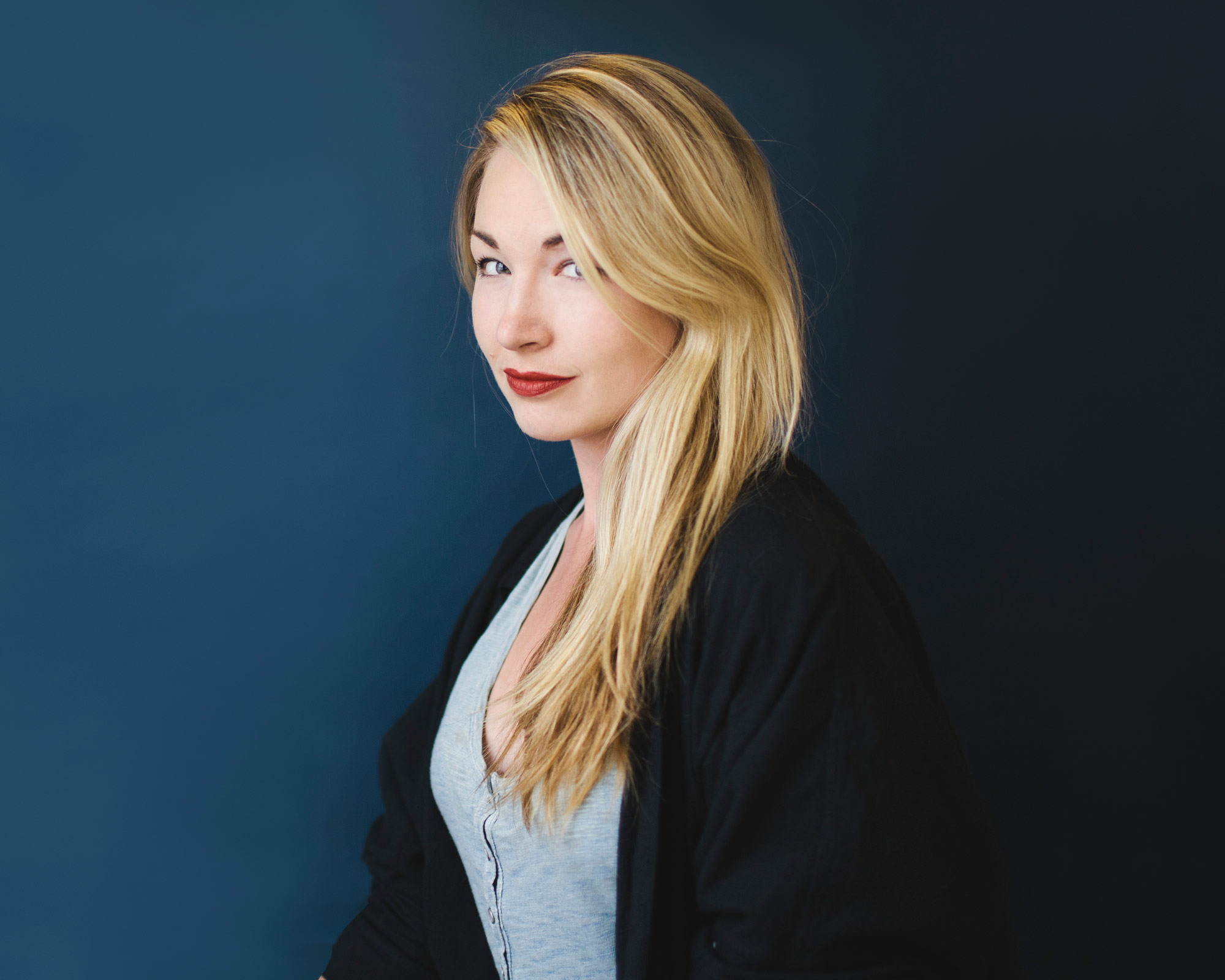
- Interview by Ryan & Tina Essmaker September 24, 2013
- Photo by Helena Price
Helena Price
- photographer
Helena Price is a professional photographer and storyteller based in San Francisco, CA. After helping to build a handful of startups in the Silicon Valley tech scene, Helena decided to ditch her tech career in the spring of 2013 and pursue her dreams of being a full-time photographer, and it worked. In the last few months, she’s done work for Designer Fund, Dropbox, Nike, Path, Photojojo, Rdio, Samsung, Square, Uber, Yammer, and more.
Interview
Describe your path to becoming a photographer.
I always knew that I would be a photographer—I’ve just taken a funny, meandering path to get here.
I grew up in a tiny town in North Carolina called New Bern, where there wasn’t much for me to do other than play in the bushes, shoot BB guns at soda cans, and take pictures. My dad was the one who originally got me into photography. He would document everything with those disposable 35mm cameras from Wal-Mart, and we all hated it. (laughing) When I was about eight years old, I started buying them and became obsessed with documenting everything.
I filled these little throw-away cameras with terrible photographs of my friends and I in the elementary school bathroom and my family hanging out at home. (laughing) Throughout middle and high school, people always expected me to be the girl with the disposable camera—I basically documented my entire life on them.
I started getting a tiny bit more serious about photography when I moved to Raleigh for college. The music scene there is amazing, and I got really involved in it as a photographer. I started touring with bands and taking their photos during breaks in the school year. I was also really into storytelling, so I would help them craft and tell their tour stories from the road—on their Myspace blogs, no less. It was around that time that my photos started sucking a little bit less. (laughing) I was getting my undergrad degree in public relations, but I wasn’t really jazzed on doing PR for a living. I didn’t want to go to class—I just wanted to take photos. It made me think that I might want to pursue photography professionally.
Immediately after I graduated, I made the spontaneous decision to move to San Francisco to pursue an MFA in photography. I had about $40 and zero ideas about how I was going to get out there, so I hooked up with two bands from North Carolina—Bowerbirds and Megafaun—who were traveling across the country that summer. Another photographer friend and I followed them on the road for two months, took photos, wrote stories, and created a bit of an Internet campaign that got us sponsored on the way over. It was awesome, and every time I’ve moved after that has been considerably lamer.
During my first semester in San Francisco, I was still doing some musician consulting-type stuff, which acquainted me with the SF music tech scene. A record label eventually noticed me and asked if I wanted to do in-house work for their roster of bands. I ended up leaving the Academy of Art to become a music-tech consultant, and I quickly discovered the entrepreneurial tech scene. I just jumped in and spent the next few years deep in tech.
Those years were a very dark time for me, creatively. I wasn’t documenting much. I completely ditched photography because I was so busy channeling all of my soul and energy into tech. I was so devoted to working my butt off and growing my career and proving myself. I liked being this random, young chick voice in the tech industry, and I was really proud of the work I did, but I lost myself in the process. After enough time, I thought, “I need to get back to photography.” It’s the one thing that, time and time again, has made me happier than anything else I’ve worked on.
I started shooting again in January. By April, I quit my tech job to make the jump into full-time photography. Things fell into place much sooner than expected, and now I’m running my own business as a full-time freelancer. All I do now is take pictures and tell stories—it’s my dream. I can’t believe it’s real.
Was creativity a big part of your childhood?
Yes and no. Growing up in small-town North Carolina, I didn’t know that a greater creative culture existed, so I wasn’t sure what was out there for me. In my late teens, I began discovering and digging through creative work online, like interactive MoMA exhibitions and designer portfolios, which was my first real exposure to creativity outside of the world I knew.
I think that has a lot to do with why I pursued a public relations degree in college, as opposed to something like a design degree; I just didn’t know what was out there. It wasn’t long before I became disenchanted with my classes and often sat in coffee shops reading about technology, creativity, and photography on the Internet. I knew that there was way more out there that I hadn’t seen yet. That was one of my biggest motivators for leaving to go to California.
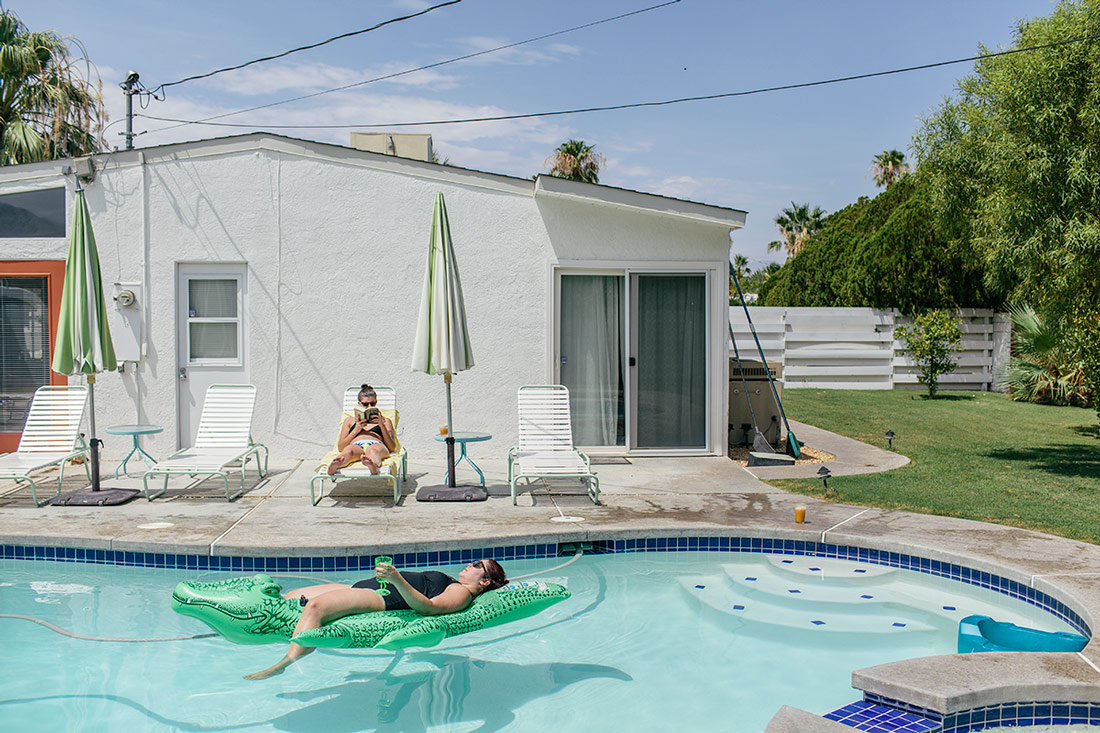
“Growing up in small-town North Carolina, I didn’t know that a greater creative culture existed, so I wasn’t sure what was out there for me. In my late teens, I began discovering and digging through creative work online…which was my first real exposure to creativity outside of the world I knew.”
Tina: That’s an interesting part about growing up in a small town. Ryan and I both grew up in the Midwest, where it’s very blue-collar, and working in a creative field almost feels like a fantasy.
Yeah, it’s funny because I always took photos, but I never thought of it as a creative thing; it was more of a utility. I thought of it as simply a way to document my life. I had a mentality of believing that if I didn’t document something, then it didn’t exist. I have a pretty horrible memory as well, so that probably contributes to it. I still have piles and piles of photo albums and old paper printouts of everything. They just take up space in my closet, but I take comfort in knowing that they are there. If they weren’t, then those things wouldn’t exist to me.
Did you have an “aha” moment when you knew photography was what you wanted to focus on?
It was a pretty epic moment when I got my first DSLR. When I finally had an adequate camera, I started to see what I could do with it, and the pictures started looking different; they had more artistic value rather than only documentary value. I started seeing light in a new way and was hooked.
Another kind of “aha” moment came when I was 18 or 19. I would dream repeatedly about seeing beautiful things and wanting to document them, but I wouldn’t have a camera; or it was broken; or some other factor was preventing me from taking photos. I woke up stressed out every morning. That Christmas, my mom gave me my first camera, and then the dreams ended.
Every once in a while, I’ll start having frustrating photography dreams again, but it just means I need to act on it. For instance, I recently dreamed about taking portraits on a navy blue seamless in a studio, but I don’t have a studio. I’d never done any sort of studio-style photography, but I kept dreaming about it over and over again. The other day, I needed to buy a seamless for a client project, so I went to the photo store and saw one in navy blue. As soon as I bought it, the dreams stopped.
Have you had any mentors along the way?
I have a bunch of friends who are fantastic photographers, and I love seeing their work all the time. I’m constantly looking for inspiration, and I know that what they do informs my work in a lot of ways.
One of the best talks I had in the last year was at a time when I was on the fence about what to do next in my career. I had done really good work in tech and had an opportunity to go work for companies I’d dreamed of working for in the past, in roles that would have been really exciting. I was sitting with a friend, who I consider to be a mentor, and telling him how nice it would be to finally work for bigger, successful tech companies in an environment where I’d be surrounded by people who had done the work I was doing, but for much longer. I thought it’d be great to have a mentor who could teach me how to take my work to the next level. He said, “I see where you’re coming from, but you should just stop waiting for a mentor because it might never happen. Successful people didn’t necessarily become so because they had mentors—they just went and did stuff.” No one knows what they’re doing, so I shouldn’t wait around for the magical moment when someone else teaches me the correct way of doing things. That conversation was solid inspiration to go off and do my own thing.
I’ve definitely had some wonderful people who took interest in me at the beginning of my career when I moved to San Francisco. More than anything, those people continually instilled confidence in me and reassured me that I was doing fine. When you’re young and starting out on your own without leadership, you don’t know whether your intuition is correct at all. You’re in a position where you’re forced to execute without knowing whether it’s right or not. But being told by people who have been doing it longer that nobody actually knows what they’re doing—and that it’s okay—was really helpful to me in the beginning. That was one of the most comforting things I’ve ever been told, but I have to remind myself of that every day.
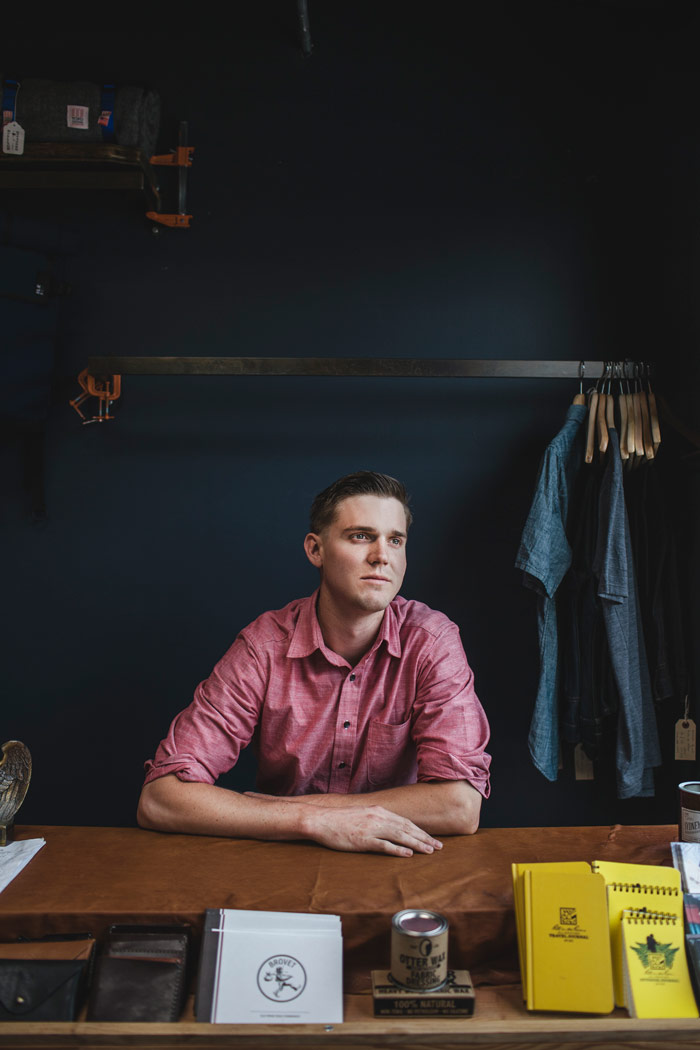
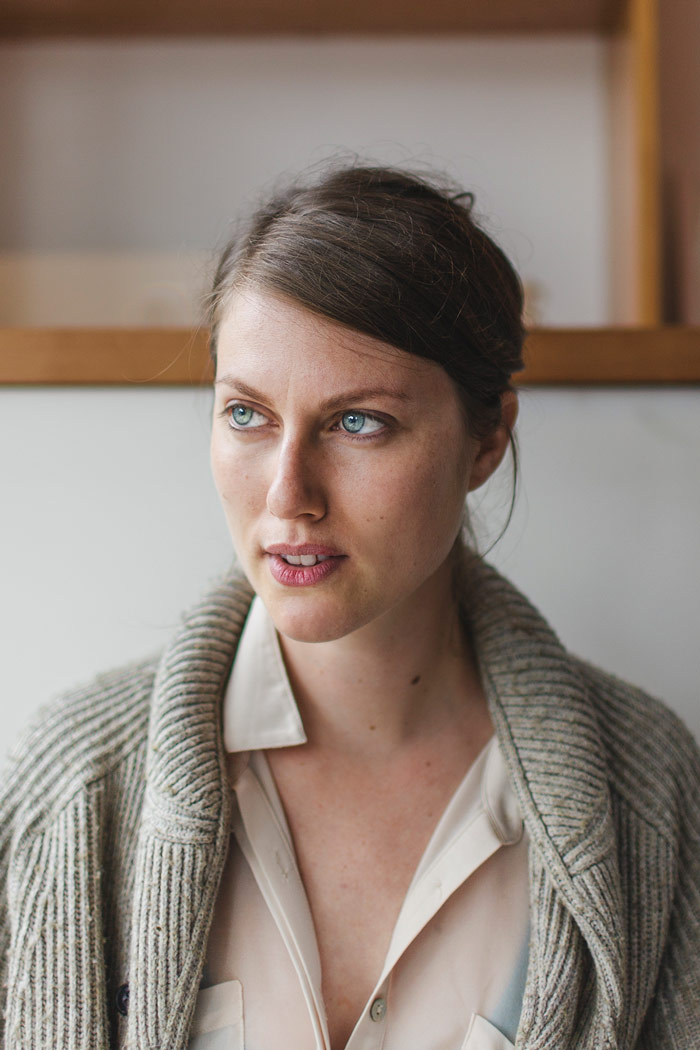
Has there been a point when you’ve taken a big risk to move forward?
I made the jump to full-time photography a few months ago. Like I mentioned before, I was on the fence about whether to pursue a tech career or become a freelance photographer. I was living in Brooklyn at the time and a tech career seemed very stable: I would have a salary, benefits, and I’d get work with brands on projects I really love. In theory, it sounded fantastic. On the other hand, I could go and try to take photographs for a living, without knowing how I was going to do it or how I was going to make money, and I could possibly end up homeless and starving—or living in my parent’s house in North Carolina within six months. (laughing)
I knew not to randomly quit my job and go freelance without taking time to plan and think. I strategized how I could transition into full-time photography without fully knowing how I would actually make money. I decided that I could do tech consulting and use that to pay my bills. Then in my spare time, I could take photos and try to land some clients. As time went on, maybe I could slowly transition into photography full-time. I thought, “Okay, I’m going to do this.” I quit my job in New York, moved back to San Francisco, and within a couple of weeks I had gotten way more work than I expected. It was all from the tech industry, and it barreled into tons of other work. I was able to stop consulting within a month, and now I make way more of a living taking photos than I did when I was in tech—it’s crazy.
I stumbled into this niche where I’m one of the few photographers who has been deep in tech and knows how to tell stories. I’ve been on the other side of the table, so I know what clients’ goals typically are, and I know how to craft campaigns. I think it’s a lovely coincidence that, all of a sudden, tech companies are talking about storytelling and trying to differentiate themselves beyond their product. These are things that were not talked about a year or two ago, but now it’s happening, and I’m the chick who’s doing it. I took a very well-timed risk that ended up working out.
Tina: It’s amazing how sometimes things are just waiting to fall into place, but if you don’t take the leap, then it’s not going to happen.
Yes. I tried to tell myself, “If this doesn’t work, I can always go back to a tech job.” I did my experiment and it worked very well. Now I can do what I’ve always wanted to do and, ideally, I’ll be taking photos and telling stories for the rest of my life.
Are your family and friends supportive of what you do?
For sure. My mom has always trusted me to make the right decisions for myself. Ever since I was off taking photos for bands in random cities while I was in college, she’s trusted that I would go off, explore, and figure things out for myself. When she found out that I was planning to move back to San Francisco, she was really excited because now she has a reason to visit California again. (laughing) She just knew that this was something I always wanted to do. Just today she jokingly asked me if she could come work for me, which is always a funny turning point in the parent-child dynamic. (laughing)
Do you feel a responsibility to contribute to something bigger than yourself?
I create things to share with the world almost to a fault. It’s not that I’m necessarily driven by the reactions of people, but I think there’s something really special about creating for yourself and then putting it out there to impact others in a positive way. When I first started doing tour photography at 18, I would get emails from random people saying, “Your photos and stories make our day, and we hope you keep doing this.” When I got those, I knew that I wanted to keep instilling those feelings in others, even if it was just a handful of people. At this point, I’m so grateful that all of this worked out and I want to inspire people to not sit in an office forever—I want them to try and make the jump into doing whatever it is they really want to do. I also want to give people ideas and practical ways of building their own photography businesses, getting clients, and those sorts of things. One of the greatest gifts I got from working in tech is learning the fundamentals of building a business, and I want to bestow that knowledge in the photo community as much as I can.
Are you creatively satisfied?
I’m satisfied to a surprisingly high degree. One might think that working for a bunch of tech clients wouldn’t involve a lot of creativity, but it’s been awesome. Everybody trusts my ideas and they really want to incorporate honest storytelling into all of these projects. They want my specific aesthetic—I don’t know what that is, but apparently they want it. (laughing) I’m sure I’m in a bit of a honeymoon phase, but all of the work I’ve been doing so far has been for brands that I love and respect, and they’re into creating honest photo work. Right now, I feel great.
Have you thought about what you might want to do in the next 5 to 10 years?
I definitely know that I don’t want to be pigeonholed as a tech photographer. Most of my clients are in tech, but I work really hard to create just as much personal work—which is very non-tech—to balance things out. I have a growing business now and will continue to work with it because it’s what I love, but I’m thinking of other channels I might want to explore. Do I want to photograph farms and wineries in Northern California? Do I want to dig deeper into editorial and commercial brands? It’s a matter of finding a balance between maintaining a focused business and staying unspecialized, in a way.
In the future, I want to do what I’m doing, but do it better. Ideally, I’ll be much better next year than I am now. I would love to continue to do the same honest, story-focused work, but in more places and with more people. Honestly, I feel like my biggest challenge will be finding a work-life balance. I would love to continue being busy, working with really rad companies and brands and traveling as much as I have been, but I also need to take care of myself. I want to be able to do little things that make me feel like I have some element of control of my life.
I also have a feeling that I’ll still dabble in consulting projects for products and tech here and there. I just can’t quit it.
“I create things to share with the world almost to a fault. It’s not that I’m necessarily driven by the reactions of people, but I think there’s something really special about creating for yourself and then putting it out there to impact others in a positive way.”
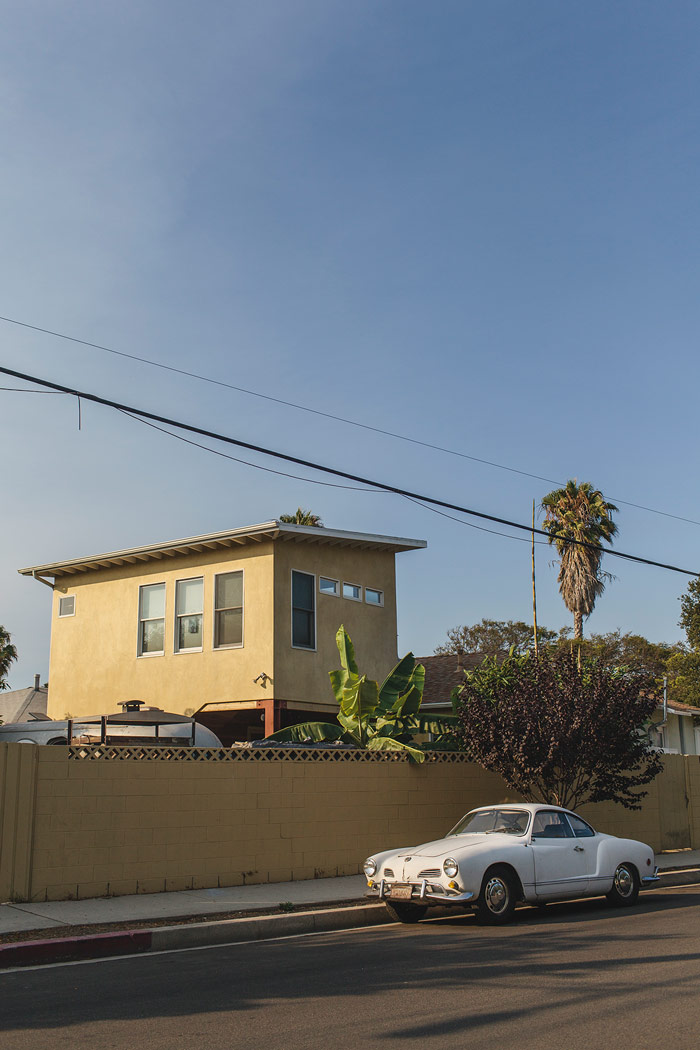
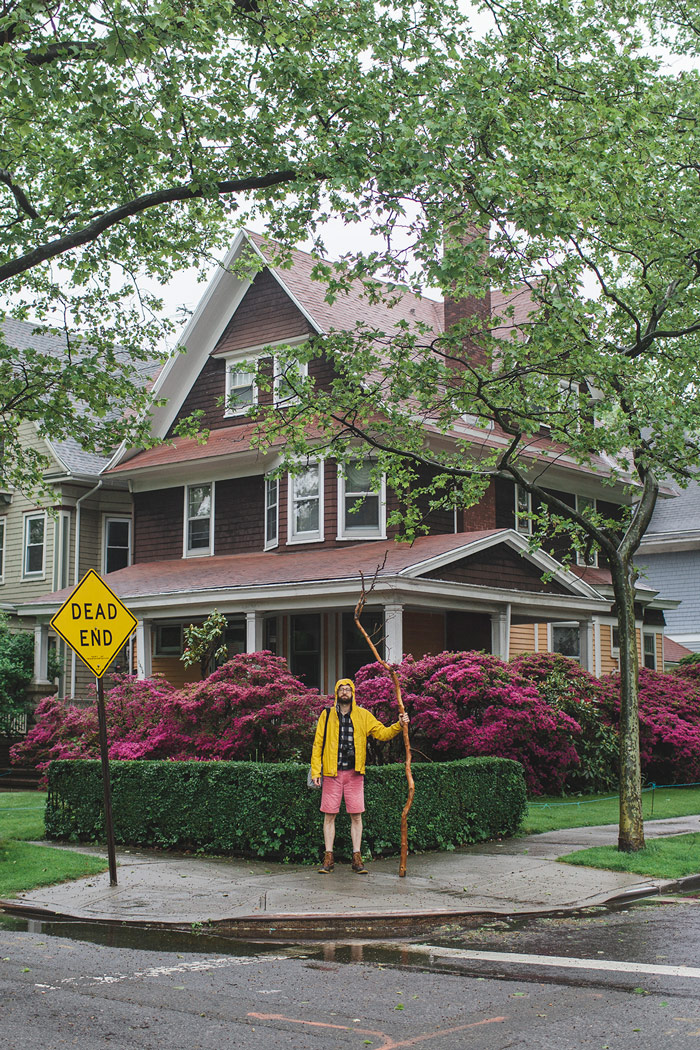
What advice would you give to a photographer who is just starting out?
A mantra that I live by right now is: “Stay grateful and stay focused.” It’s very easy to get tied up in what other people are doing and compare yourself to others. We’re in an age where everyone is on the Internet and everything has metrics attached to it. My advice would be to stay very focused on making good personal work with your own unique perspective. You can create work that gets you a million likes on the interwebs, but having a clear point of view as an artist is what is going to create distinction and longevity in your career. Don’t worry about creating things that you think will be popular for a certain group of people—just take time to explore and document for yourself. Eventually you’ll find patterns in your work and your viewpoint will emerge on its own. It’s not something you can manufacture.
Tina: That’s very true. It takes time to develop your own style.
Oh, yeah. I was paralyzed for years while I was in tech. I couldn’t take a single photo because I was so worried about what my style would be. I thought, “What am I supposed to shoot? What kind of a photographer am I? Do I use film? Digital? What do I document now that I’m not traveling on the road with bands?” I had no idea what to do. This past January, I made a New Year’s resolution to stop worrying about what I should shoot. I decided to take so many photos, every weekend, of everything, that I would have enough photos to edit every day of the week after I got home from work. I kept a camera in my purse all the time and I took photos of whatever I felt was worthy of shooting. New patterns started emerging that were totally different from what my style was years ago. For instance, I discovered that I love shooting portraits—a completely new thing for me. I think you have to stop worrying, make a bunch of shit, and then see what comes out of it over time.
How does living in San Francisco impact your creativity?
I love it here—where I live is very quintessentially San Franciscan. I’m at the very top of Nob Hill, surrounded by a bunch of old hotels, historic landmarks, tourists, and elderly San Franciscans. I live next to Chinatown and North Beach, and I can run along the Embarcadero. I don’t really live near any of my friends, and that gives me the ability to be a bit more focused. I think it’s actually for the best: I don’t have people tempting me to walk 20 feet to the neighborhood bar to hang out. (laughing)
Honestly, since I got back to San Francisco, I’ve been pretty heads-down and focused on building my business. But I try to go the gym every morning, take time to cook every day, and see close friends: having those elements in my life has been very grounding for me.
Is it important to you to be a part of a creative community of people?
Oh, yeah, it always has been. I’ve always been a floater between different communities because I’ve been into so many different things. I’ve been involved in the tech and photography communities, in local businesses, advertising, DIY, you name it. I enjoy dabbling in a bunch of different communities and have always set out to meet as many people as I can, wherever I am. From there, I like to handpick the awesome people that exist in all of these different spaces and create my own world from that. I try to spend time with my favorite creators in tech, photography, local businesses, food, and more: it feels nice to have that variety of influence. I think that only hanging out with photographers would prevent me from growing creatively, so I try to mix it up.
What does a typical day look like for you?
I have two kinds of days now. Days when I’m shooting all day have been happening with increasing frequency—last month, I shot 17 days in a row with no weekends off. It was really intense, but exciting. On shoot days, I wake up at 7 or 8am, and go straight to meet whatever client I’m working with. I shoot all day, come home, and edit until I can’t keep my eyes open.
On lighter days, I try to have a rigid schedule. I wake up around 8:30 or 9am and walk through Chinatown to my gym. Sometimes I do a little run on the Embarcadero—but I really hate running, so I don’t do it that much. (laughing) Afterwards, I walk back home and make breakfast or lunch and then spend the afternoon writing emails or editing photos. Sometimes I’ll have a small afternoon photo shoot and will either work for the rest of the day or go have dinner with a friend or something. I’m actually thinking about setting a rule for myself to not take any shoots before 12pm—my morning routine has been so therapeutic for me that it’s more important than the money I would make from two extra hours of shooting.
Tina: Routine definitely provides a sense of normalcy when you’re a freelancer.
Yeah, it does. I read this article about how having some element of routine in your life has a direct correlation with happiness. Whether it’s going to the gym, making a meal every morning, or having monthly movie night with friends, those kinds of things make a big difference.
I was a very unstructured person for many years. I was pretty transient and never felt any sort of loyalty to any particular city or group of people. Now, I’m finally starting to settle down a bit and have a solid circle of people who I trust and hang out with regularly. It feels really nice.
“I’m so grateful that all of this worked out and I want to inspire people to not sit in an office forever—I want them to try and make the jump into doing whatever it is they really want to do.”
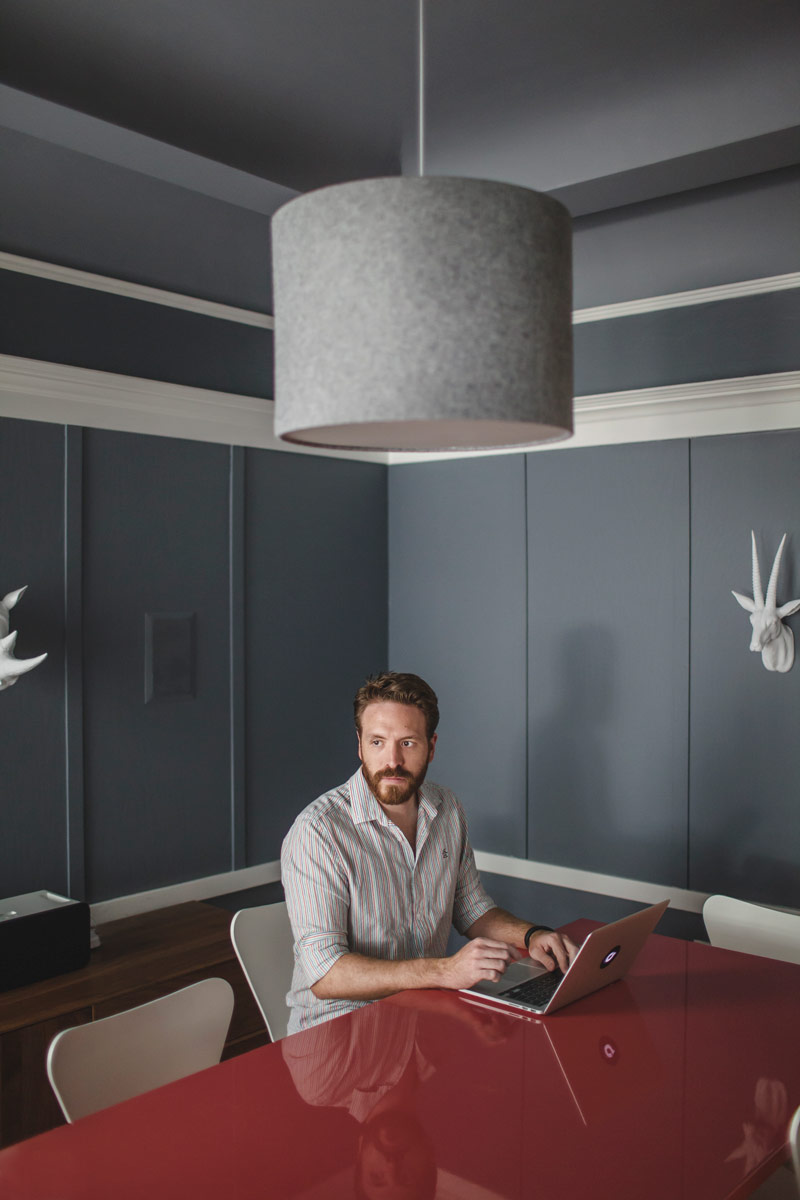
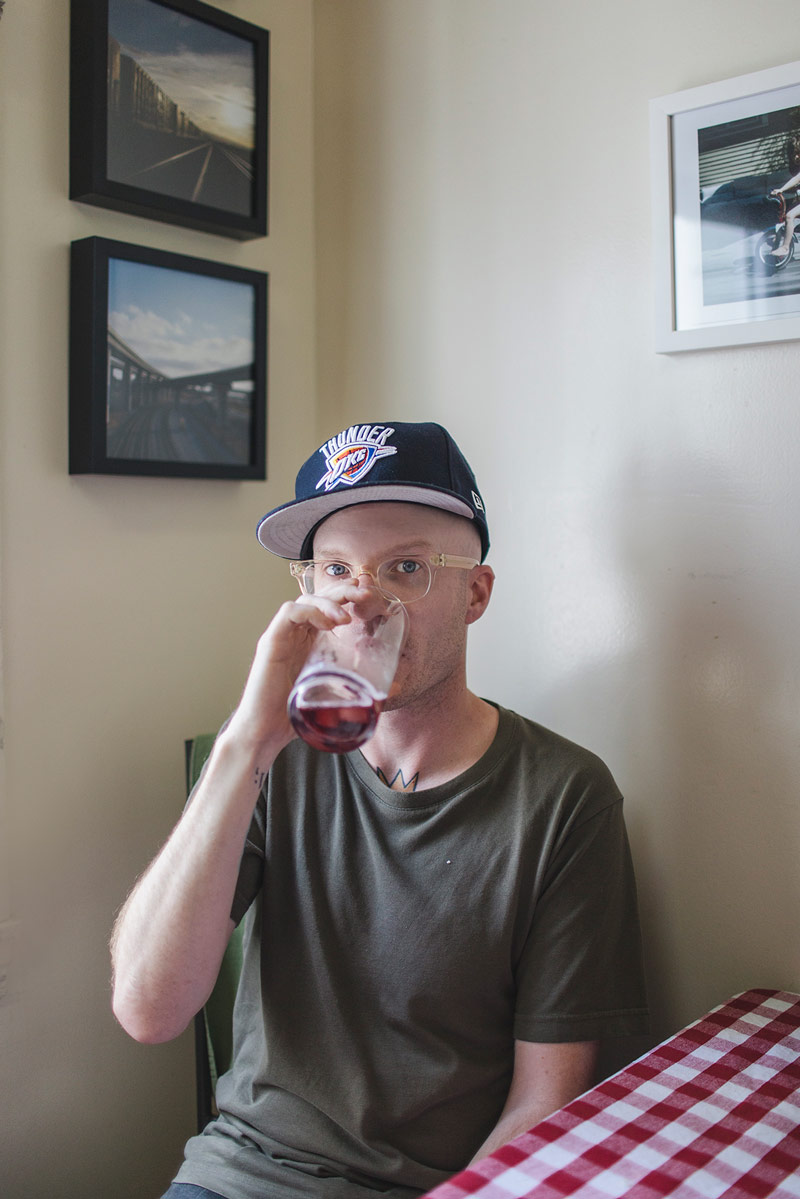
Are there any albums or artists that you have on repeat right now?
It’s been a real hodgepodge lately, but it mostly ends up being chillwave, folk, or gangster rap. (laughing) I love it all. I’ve been playing a lot of the new Washed Out album, Paracosm, along with some A$AP Ferg, Juicy J, and Earl Sweatshirt. After coming back from a recent weekend in North Carolina, I started listening to folk music again—it had kind of dropped off once I came to California. I put Lord Huron on repeat—really beautiful, folksy, Fleet-Foxey music—and get really nostalgic for warm North Carolina nights.
Any favorite movies or TV shows?
I don’t ever watch television, actually. I have a strange obsession with productivity, so I’m always working. I’m into going to the gym, making dinner, editing photos, and sleeping—all of that falls into productivity for me, and I can’t fit TV into it. Occasionally I’ll go over to friends’ houses and they’ll have something on, like Orange Is the New Black—which I think is amazing—but I just can’t commit to TV. Maybe one day I’ll relax a little bit and start watching again.
One movie I love and always talk about is Beginners by Mike Mills. I get so many feelings about that movie; the soundtrack is wonderful, and it’s gorgeously shot. I’m into those kind-of-light, kind-of-dark independent movies where there’s maybe a love story involved, but maybe not, and it doesn’t matter because it’s all so heartbreakingly beautiful.
Do you have a favorite book?
In the same productivity vein I mentioned before, the only books I normally allow myself to read are very utilitarian and serve a function in my work, like Content Strategy for the Web or Making Ideas Happen by Scott Belsky. The other day I was talking about awesome reads with my friend, Laura, and she inspired me to get a couple of different books from StoryCorps, which contain tons of small stories collected from people around the world. I also got Miranda July’s It Chooses You, which I’m very excited to start reading.
Do you have a favorite food?
I’m really into cooking right now. I always had a life where I’d spend my salary on ridiculous meals in San Francisco and New York. I’ve had my city foodie experience, and now I just want to relax in my house and drink wine and cook shit. I just never had time for it before. I’ve been into brining chicken, making really awesome salads, and just trying to take care of myself nutritionally. Otherwise, my favorite foods would have to be dumplings from Chinatown or Pakistani food from the Tenderloin.
I’m actually setting out on a new project to eat as much fried chicken in this city as I can. (laughing) I recently asked people on Facebook and Twitter about their favorite fried chicken spots in San Francisco and I got over 30 responses within an hour! I went to the number one pick, The Front Porch, and it was amazing. So now I need to hit up the other 29 places on the list. I come from the South: I need regular portions of fried chicken, and I am not ashamed. (laughing)
What kind of a legacy do you hope to leave?
I definitely want to leave some sort of photographic legacy. I’m really into the idea of people’s life stories being recorded and documented, and how documentation has changed over time. Almost all of us are part of a generation that will be well-chronicled, whether it’s through Facebook, Instagram, or Twitter, but I still like to be conscious of the digital legacy I end up leaving.
I want to leave photos with context; photos that tell stories. I want to be able to leave things that people are going to find later, so that they can know something about our time. The life story of a random ex-techie photographer chick living in San Francisco or the story about the state of tech in the early 2000s might sound mundane to some right now, but it might be an interesting nugget of information to people 100 years from now.
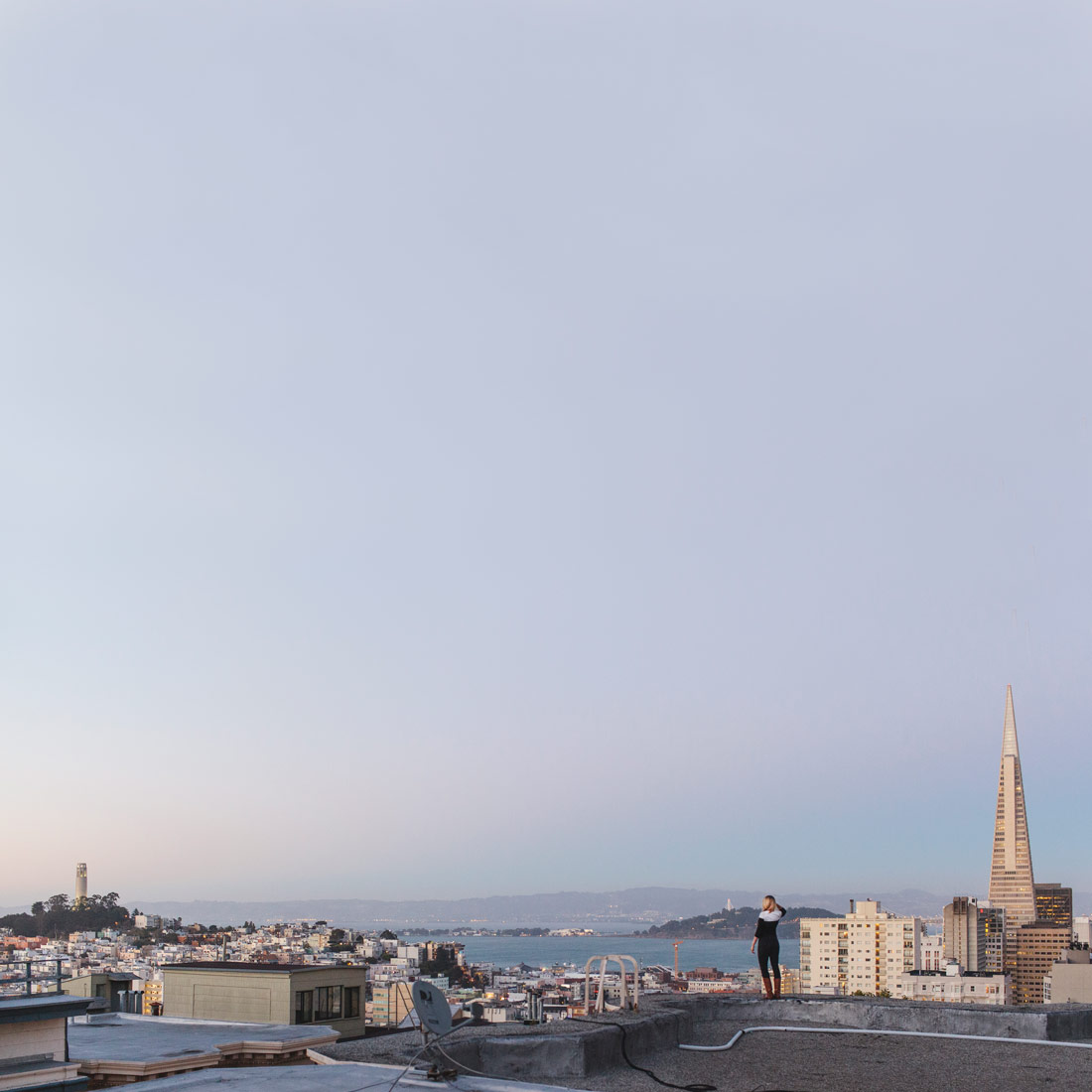
“Don’t worry about creating things that you think will be popular for a certain group of people—just take time to explore and document for yourself. Eventually you’ll find patterns in your work and your viewpoint will emerge on its own.”